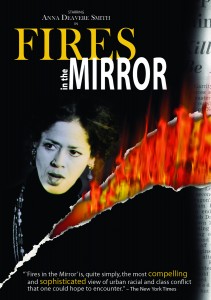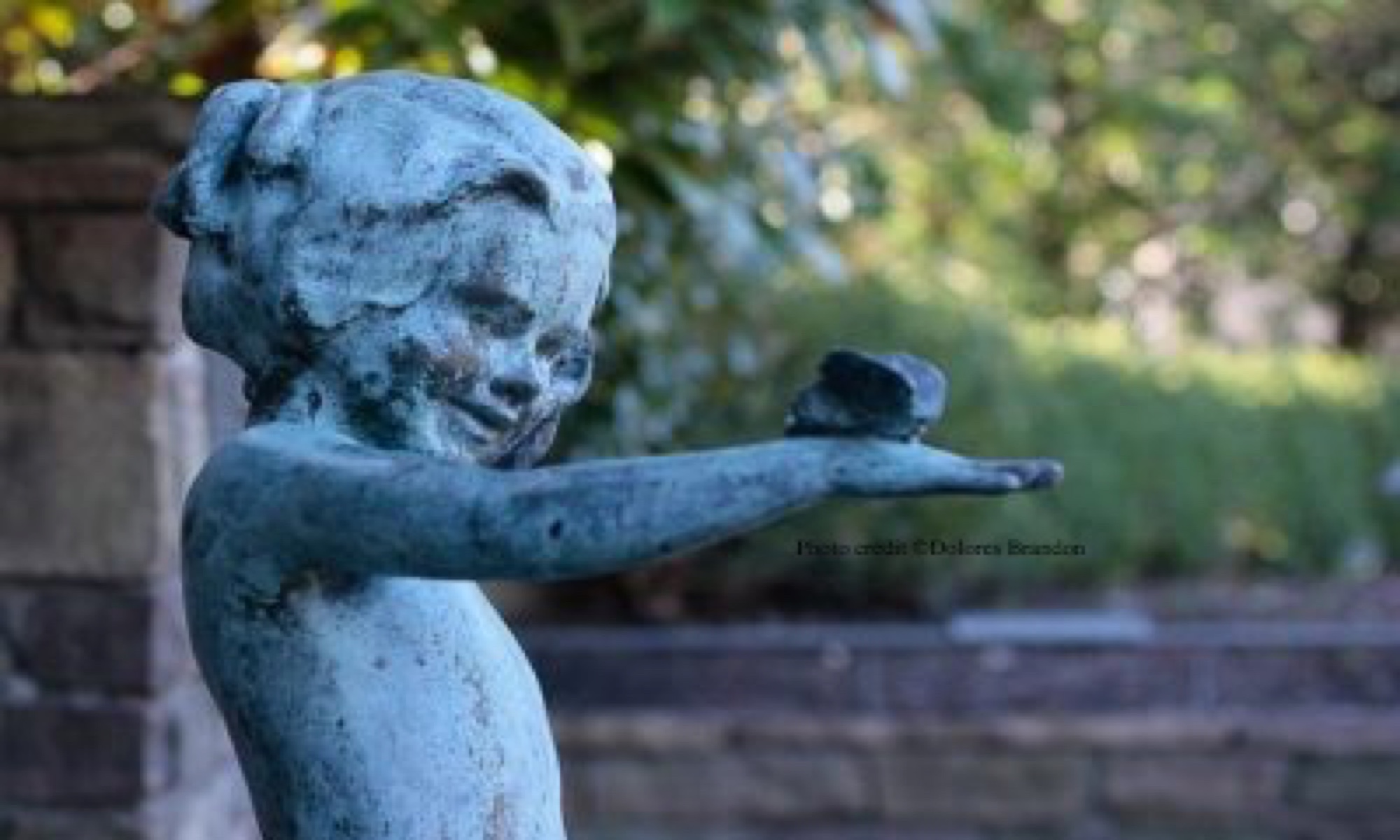In her own words
BRANDON: If you would, describe the collaborative process you engaged in with Judition Jamison and The Alvin Ailey American Dance Theater Company to create HYMN?

SMITH: Ms. Jamison saw [me performing] FIRES IN THE MIRROR two summers ago (1991), and came to me saying she would like me to work with her on a tribute to Alvin for the 35th Anniversary of the Ailey Company. She proposed that I interview the company, all[33] of them.
She wanted to choreograph a piece for the dancers to perform as I [acted out] their words. That was sort of the simple way that we stated it, and that’s pretty much what it is.
I came to New York, met up with [the company] in Baltimore [winter 1992], interviewed each one of them. After I did the interviews, I sent her a script, and out of that script she chose the [ particular statements] she thought would work the best. Soon after, the musicians were involved – looking at the script and responding to some of the pieces musically.
BRANDON: What were the themes you identified?
SMITH: [Judith prepared] just a few questions [for me to ask each dancer/company member. What are you doing here? Why do you stay? If Alvin were here today what would you say? And then, what does vulnerability mean to you?
Those were the questions. What are you doing here? became a very wonderful jumping off point for most of the dancers.
The question of vulnerability: I see that as a big theme in the Ailey legacy. Because a major part of Alvin Ailey’s dream was to make dance accessible on every level. [It all] comes back to the possibility of vulnerability both on a creative level and, I would say, on an institutional level. That was a very interesting theme to watch develop.
BRANDON: What kinds of things came up around that issue?
SMITH: We kept coming back to an awareness on the part of all of them that dance is not the steps, dance is more than technique, dance is also about the human spirit. [Ms. Jamison stresses this over and over with the dancers]. She believes spirit comes first, and then comes the human being as a vehicle.
Vulnerability ultimately also meant for them the ability to take risks, to change things and to try new things.
BRANDON: Is it unusual for you to be working with dancers?
SMITH: Yes, although part of my own personal artistic quest is to be on the lookout for collaborators and collaborations that can [expand] the boundaries of my art form. My whole way of being in theater and academia is about crossing boundaries. The Ailey company really is a different world, a special world. It’s been a real treat to be among them.
And of course it’s been more than a dream, bigger than a dream; I guess I didn’t even know it was a dream until it became a reality – that I would work with Judith Jamison whose been a hero of mine, as you might imagine.
BRANDON: What was most challenging for you in this collaboration?
SMITH:
The split [between body and word]. I speak their words, and they dance to the sound of my voice. As an actor, I’m used to a more naturalistic stage performance – my voice in my body.
When I interviewed the dancers, I was very aware of the split; with many of the interviews, I would think it’s not just the impact of their words, but also it’s the impact of their physical presence, which as you might imagine is quite stunning, amazing, and powerful.
Frequently I’d wonder, am I going to find anything here that is going to speak as eloquently as their bodies are speaking? Of course, I always knew that Judith Jamison was taking care of that part by choreographing the dance [and had to trust she would make it work].
BRANDON: What do you think is the importance of the Alvin Ailey legacy?
SMITH: Ailey gave meaning to life and explained life through dance in this very accessible form.
He explained things about African American traditions: characters are very important in the dances, and stories are told. At the same time, he wasn’t afraid or timid about making a social statement, or a political statement. In addition to making fine choreography, he wanted to say something about the beauty and intelligence of Black people, about their ability to entertain, and their ability to use discipline to transmit deeper feelings, and give form to feelings.
The company, while primarily African American, includes dancers [and staff] of other ethnicities as well.
Another beautiful thing about this concern for accessibility is I think it must have been clear to Alvin, that his dream, and his attempt, and his gift shouldn’t stop with him. Ms. Jamison talks about this idea of a continuation of a line, of a lineage, of a legacy that [came through Alvin but] started with Katherine Dunham. Ms. Jamison sees this continuation as something on almost a spiritual level.
BRANDON: Do the dancers see Judith Jamison as the heir to this legacy?
SMITH: Yes. One of them talks about how she thought that Ms. Jamison was the only person who could ever have fit in Alvin’s shoes. Others talk about how Alvin used to walk around with the heels of his penny loafers down. I think that’s a really stunning picture of someone who in fact left his shoes open, that he wore his shoes like slippers. The fact that Ms. Jamison so easily slips into that says something quite wonderful about the way the boundaries of our lives, and our persona drops in the face of the importance of something which is larger, something which they [both] feel deeply must go on and on.
BRANDON: What else did the dancers and other artistic staff say about Alvin Ailey?
SMITH: In the company[today, 1993] there’s such diversity of experience); there are some members of the Company who’ve been there for years – like Dudley Moore, Sarita Allan, and Marilyn Banks – from the old days. And Ms. Jamison herself, who knew Alvin when he was riding around in a station wagon, carrying all the props and costumes.
Then there are the younger dancers, two of whom never met him. And, [there are] very differing degrees of the way they knew him: from Judith who actually lived with him at one point, to those who studied with him, those who auditioned for him, those who only saw him walking around and those who never saw him.
To the question – What would you say today if Alvin were here? – most of them had a variation on the theme of – I love you. It renders a very beautiful image of a man who was a combination of a creative force, and then someone who was also kind of a brother/father figure, brother/father/mother figure.
BRANDON: How might you describe Ms. Jamison’s approach as the heir to the Ailey legacy?
SMITH: Well, I think the importance has to do with that image: she has her own shoes, but him leaving the backs of his shoes open I think, invites not only her feet, but her shoes.
She’s said many times that the transition from being a dancer to running this company is fairly easy for her. And I think it’s easy because she sees a big, big picture and is rendering that: she speaks for him and feels responsibility to his dream.
I’ve never been in an institution where the new person doesn’t fight the image of the other. Many of us trip over our own egos. I think [Judith’s example is] really magnificent.
Also,(having been a dancer), she has a deep understanding of the dancers. She really understands them all as individuals, and that individuality is something very, very important in the Alvin Ailey legacy. Ailey didn’t like cookie cutter dancers; dancers [in this company] are all very particular, diverse shapes and sizes. That was perfect for me because I also believe in individuality.
Judith sees each dancer in their aspects and in their details. I think you see that in HYMN: she choreographed a lot of solos [for that work]. Each dancer puts his/her body on the line, and speaks their convictions through action.
THE END
RETURN TO JUDITH JAMISON page on TRACES

